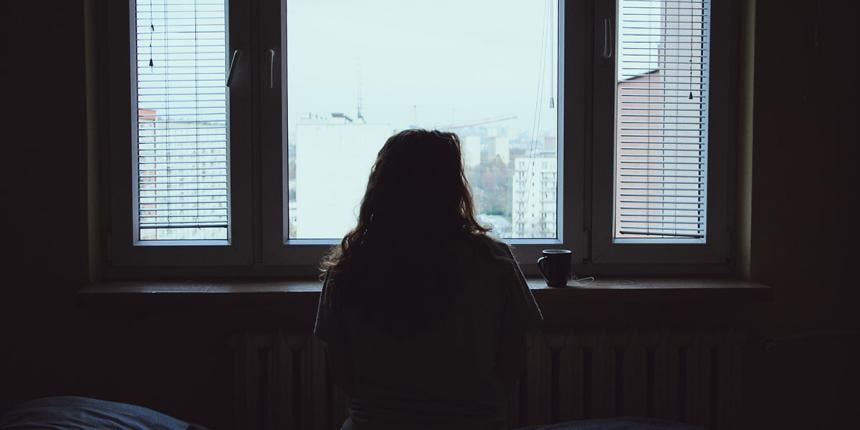5 Ways to Beat the Fall and Winter Blues

When fall and winter days draw in and it gets increasingly darker earlier in the late afternoon, you may start to feel moody, even gloomy, sluggish, lacking in energy, slower to function and more tired. If you feel this way and have not been diagnosed with clinical depression, it’s likely you’re one of the 10 percent of the population who suffer from symptoms of SAD—Seasonal Affective Disorder.
SAD is a seasonal type of depression related to light, specifically the reduction in exposure to sunlight. “This seasonal effect is a spectrum from low level to severe,” says Norman E. Rosenthal, MD, clinical professor of Psychiatry at Georgetown University Medical School in Washington, D.C., and author of Winter Blues: Everything you need to know to beat Seasonal Affective Disorder.
He explains that for each person who suffers from SAD, there are five who feel a general malaise, “like we’re just not performing up to snuff. We can get into work but we’re slower to produce, less competent, and not up to our usual performance standard.”
Some people may even have a genetic predisposition to the disorder. After decades of looking for a biological link, University of California, San Francisco, researchers identified a gene in 2016 that linked disruptions in sleep patterns — a common symptom for those who struggle with SAD — to shifts in mood.
The key to beating the winter blues comes down to making some adjustments to your immediate environment—specifically when it comes to lighting, sounds, and colors. Food and fitness also play a part in beating SAD symptoms. Exercising raises our level of endorphins, hormones that boost mood and energy. On the nutritional front, it’s important to avoid carb-heavy and fatty-rich foods that can physiologically and emotionally weight us down.
The good news is taking additional steps involving making a few changes to your lifestyle and your surroundings at home and work, you can potentially help prevent and manage SAD, and increase your chances of beating the winter blues. Here are five specific ways to help improve mood and ease the symptoms of SAD.
Shine More Light in Your Home
A deficit of light exposure during winter’s short days is a main cause of seasonal affective disorder. Decreased daylight triggers more secretion of melatonin, known as the sleep hormone, making us feel tired all the time and sluggish. To get more light in your life, experts advise swapping dim bulbs for brighter bulbs, or better yet LED bulbs, which provide incandescent light with a warm glow — and avoiding the clinical, cool and sterile brightness of fluorescent lights. A trick interior designers use is to install LED strips behind window treatments to create the illusion of daylight still shining through even when it’s dark out.
Play with Color
Research shows the best colors for boosting your mood are summery shades of orange, yellow and gold. Avoid cool colors such as blues, grays and whites — your body and brain both need warm and glowing colors to keep your spirits up. Also ,consider freshening your walls with multi-pigmentation paint. Due to what’s called ‘selective wavelength absorption,’ the pigment in the paint changes the strength and color of reflected light, creating an illusion of natural light flowing through rooms as you move around. (Most traditional interior paint is single pigment).
Recreate that Summer Feelin’
It’s also important to simulate summer vibes to help alleviate symptoms of SAD, Rosenthal says. He says the best way is using the hygge (pronounced hue-gah) approach to accessorizing room. It’s the Danish concept of creating a ‘happy environment’ using favorite colors, images and decorations to create a comforting atmosphere of contentment. He also recommends using a white noise machine of ocean sounds and birds singing, as well as floral and citrus fragrances to help uplift your mood.
Avoid Comfort Foods
Winter has many of us craving comfort foods to combat the cold, and the holidays are full of mashed potatoes, pies, cookies and heavy deserts. But comfort foods are typically laden with bad fats and carbs, which can slow metabolism and lull us into a general sense of fatigue. Instead, choose foods containing heathy fats, such as avocados, olives, nuts and seeds, and fatty fish such as salmon, tuna, trout, mackerel, herring and sardines. Instead of heavy stews, make hearty-but-healthier vegetable and lentil soups — and keep eating those summer salads.
Keep Exercising
An important way to beat the moody blues is to stay active, even when it’s cold outside and you don’t feel like working out or going to the gym in the dark. Just taking a brisk, invigorating daily walk is a great way to get your endorphins going — the energy and mood-boosting hormones.
